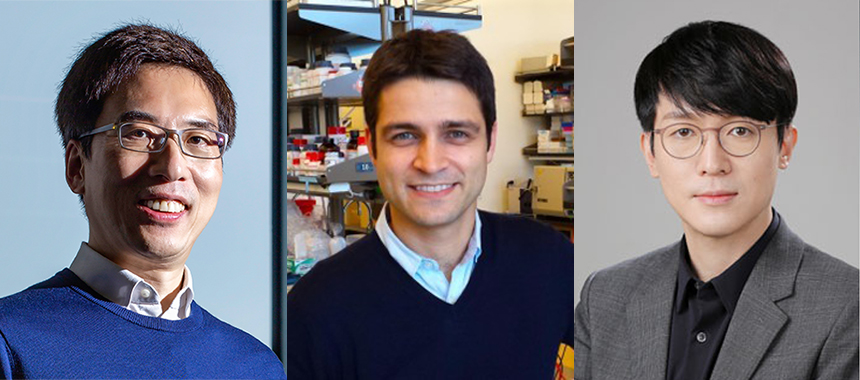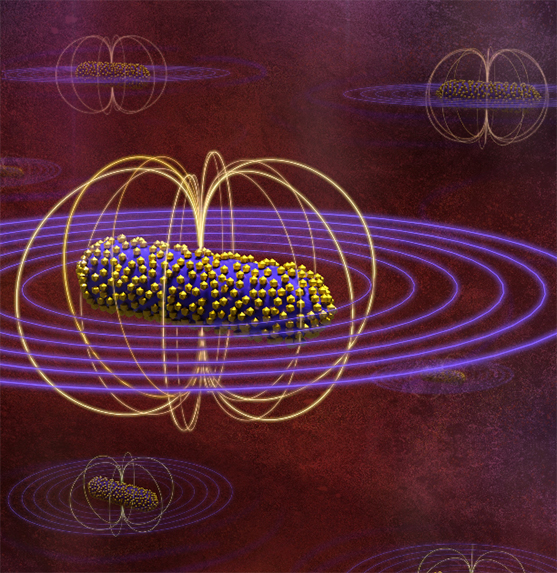A Nanoscale Ultrasound Contrast Agent for Precise Determination of Tissue Stiffness Developed
Magnetic nanoparticle structures modulate ultrasound signals based on tissue strength, dramatically improving diagnostic accuracy and sensitivity
Published in the international journal Nature Materials (IF 41.2)

Yonsei Advanced Science Institute Director Jinwoo Cheon (Department of Chemistry, IBS Center for NanoMedicine (CNM)) and his team have developed a novel nanotechnology for accurately detecting the stiffness of human tissues using ultrasound to aid in diagnosing diseases. This research was conducted in collaboration with Mikhail G. Shapiro at the California Institute of Technology (Caltech) and Seung-Woo Cho of the Department of Biotechnology and published on October 17 in the international journal "Nature Materials (IF 41.2)."
Fibrosis of human tissues is occurring with increasing frequency due to aging in modern societies. Fibrosis causes stiffening of organs and is symptomatic of a range of aging associated diseases including pulmonary fibrosis, liver cirrhosis, arteriosclerosis, and cancer, and can be life-threatening if not detected early. As there is no fundamental cure, early diagnosis is crucial. However, it is currently challenging to measure the degree of sclerosis in living tissues and determine the extent of its presence without a biopsy.
Ultrasound is a leading non-invasive medical technology that enables easy non-invasive viewing of internal human tissues. At present, it is not possible to quantitate tissue stiffness using existing ultrasound technologies. Hence there is an urgent need to develop new technologies.

The magneto-gas vesicle (MGV) (a nanostructure composed of magnetic nanoparticles bonded to a gas-filled protein) developed by Director Cheon’s team is a high-performance ultrasound contrast agent that scatters sound waves differently from biological tissues due to its unique physical properties. MGV produces highly oscillatory sound wave scattering even in weak magnetic fields, enabling ultrasound imaging that is four to eight times brighter and more precise than conventional imaging.
The oscillatory behavior of MGV induced by a magnetic field change with the stiffness of the surrounding tissue. This makes it possible to measure biological tissue stiffness (which has been difficult to measure with conventional ultrasound technology) with great sensitivity within the physiologically relevant pressure range (50 Pa to 5 kPa). Furthermore, the MGV surface has been optimized to maximize biocompatibility, conferring the advantage of being able to track changes in biological tissue stiffness for a long time without adverse effects on the body.
The research team used MGV to non-invasively and accurately diagnose the onset of tissue stiffening and liver fibrosis in live mice. MGV was also used to measure tissue stiffness in lung fibrosis-induced organoids (human-like organs) to observe the onset and progression of lung fibrosis and to determine the efficacy of therapeutic agents.
Director Cheon said, "MGV technology will provide a new medical diagnostic platform to aid in preventing fatal sclerosis." "We expect to better understand the relationship between disease development and tissue stiffness and suggest new drug therapies or treatment methods," he added.
With the aim of becoming a world-class academic basic science research and education center, Yonsei Advanced Science Institute is conducting convergence research in nanomedicine and looking ahead into the next 100 years. Yonsei Advanced Science Institute aims to create first-movers and big science in convergent fields and contribute groundbreaking future scientists through its nanobiomedical engineering major, which combines nanoscience and medicine.
Find out more:
Title of original article: Magneto-acoustic protein nanostructures for non-invasive imaging of tissue mechanics in vivo
DOI: https://doi.org/10.1038/s41563-023-01688-w
Journal: Nature Materials
Contact corresponding author: Prof. Jinwoo Cheon (jcheon@yonsei.ac.kr), Prof. Seung-Woo Cho (seungwoocho@yonsei.ac.kr)
Recommended Articles
Professor Myeong Min Lee
A QUIRKY twist of fate: understanding epidermis cell differentiation in plants
Professor Jihyun F. Kim
Microbial Mercenaries for Plant Disease Resistance Ungrounded